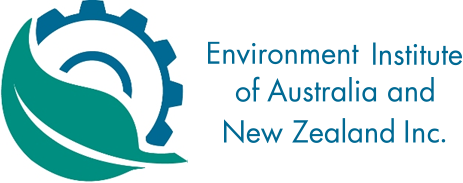-
Member Login
- Home
- About
- Institute Groups
- Membership
- Events
- News & Publications
- Institute Programs
- Resources
- Jobs Board
- Contact Us
- Site Info
Impact assessment news round up - May
Read the latest IA news from around the country.
Queensland
Provided by Kate Sinclair MEIANZ, Stantec
- The new Planning Act 2016 will replace the Sustainable Planning Act 2009 on 3 July 2017.
- Consultation on Draft Environmental Values and Water Quality Objectives under the Environment Protection (Water) Policy for the Queensland Murray – Darling Basin region and other regions – closing date for submissions on 31 May and 30 June 2017 respectively
- Queensland Government is proposing a new policy for mine rehabilitation outlined in a discussion paper – Better Mine Rehabilitation for Queensland, submissions closing on 15 June 2017
Victoria
Provided by Mandy Elliott MEIANZ, EnviroME Pty Ltd
The Victorian Auditor-General’s Report released by the Victorian Auditor-General’s Office on Effectiveness of the Environmental Effects Statement Process was released in March 2017.
In Victoria, for projects likely to have a significant environmental impact, the Environment Effects Statement (EES) process is the key statutory mechanism for assessing environmental effects. The Minister for Planning is the responsible Minister and the Department of Environment, Land, Water and Planning administers the EES process under the Environment Effects Act 1978 (EE Act).
Since 2000, two reviews and a parliamentary inquiry have found the legislation and associated EES processes to be costly, and lacking clarity and transparency. The objectives of the recent audit were to assess the EES process and the extent to which it is being managed effectively within the current legislative context.
The report recommended eight matters to the department:
- Review its position on whether legislative review and further reform is required.
- Systemically review its internal guidance and update as required.
- Develop and implement a risk-based system for monitoring compliance with conditions in lieu of an EES.
- Develop a process for statutory decision-makers to report their response to the minister’s recommendations.
- Publish a guide on the inputs and detail required from proponents in the scoping phase.
- Develop balanced scoping requirements for each EES.
- Establish a process for securing Technical Reference Group members with appropriate expertise.
- Outline reasoning behind advice to the minister on inquiry options.
It will be interesting to see if changes do occur into the future. View the VAGO report here >
Northern Territory
Provided by Jeff Richardson MEIANZ, EcOz
The NT is currently going through a reform of its environmental regulation.
NT EIANZ (as well as industry and environmental groups) made submissions to previous iterations of a reform proposal.
These submissions are now being collated into a discussion paper (due out very soon) that will seek further advice and comment. This first stage will reform the environmental impact assessment system and permit the Minister for Environment to give project environmental approval. There will also be improved accountability for the NT EPA.
Stage 2 will transform the Waste Management and Pollution Control Act into a new Environment Protection Act, and fold environmental provisions of the Mining Management Act into the new Environment Protection Act.
Western Australia
Provided by Natalie Leach MEIANZ, Department of Water (WA)
WA government has recently announced the merger of three key Western Australian environmental agencies. The Public sector commission reports this as the 'biggest shakeup of the public sector in decades, with 40 per cent of Government departments to be amalgamated or abolished'.
The Departments of Water and Environment Regulation and Office of the Environmental Protection Authority will be amalgamated to form the Department of Water and Environmental Regulation which will assume responsibility for all environment and water regulation, creating a ‘one stop shop’ for industry and developers.
The Department of Mines and Petroleum, responsible for administering the Mining Act will retain its primary function, as well as assuming responsibility for regulating the building and construction industry and a focus on worker safety.
The Department of Parks and Wildlife, currently responsible for management of Western Australia’s natural attractions and biodiversity has combined with the Botanical Gardens and Parks Authority, Zoological Parks Authority and the Rottnest Island Authority to become the Department of Biodiversity Conservation and Attractions.
It is anticipated the changes will take effect by 1 July 2017. See more on the changes here >
We acknowledge and value the rights and interests of Indigenous Peoples in the protection and management of environmental values through their involvement in decisions and processes, and the application of traditional Indigenous knowledge.

